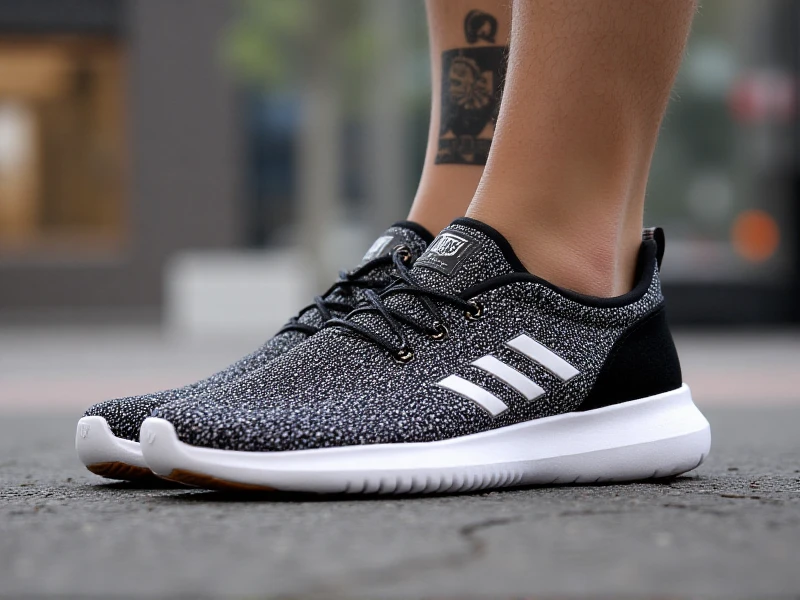The Ultimate Guide to Men's Shoes: Style, Comfort, and Versatility
2025-05-30

Here is an SEO-optimized article targeting the keyword "Men's shoes", written naturally to avoid an AI-generated feel:
Finding the perfect pair of men's shoes isn't just about covering your feet; it's a cornerstone of personal style, confidence, and comfort. The world of men's footwear is vast, offering everything from timeless classics to cutting-edge performance designs. Whether you're dressing for a critical board meeting, a weekend adventure, or a formal event, understanding your options is key. Let's delve into the essential categories and considerations for choosing the best men's shoes for any occasion.
The Fundamentals: Key Styles Every Man Should Know
1. Dress Shoes: Elevating Your Formal Look
Oxfords: The pinnacle of formal men's shoes. Characterized by "closed lacing" (the eyelet tabs are sewn under the vamp), they offer a sleek, streamlined silhouette. Perfect for business suits, weddings, and black-tie events. Invest in classic black or rich brown leather.
Derbies: Similar in formality to oxfords but feature "open lacing" (eyelets sewn on top of the vamp). This makes them slightly less rigid, more adaptable to different foot shapes, and arguably a bit more casual. A versatile choice bridging business and smart-casual settings.
Loafers: Slip-on sophistication. From elegant tassel loafers to iconic penny loafers or chunky bit loafers, these men's shoes offer style without laces. Ideal for smart-casual attire, summer suits, or even cropped trousers.
2. Everyday Casual & Lifestyle: Comfort Meets Cool
Sneakers/Athletic Shoes: Undoubtedly the most popular men's shoes globally. Transcending the gym, modern sneakers range from minimalist white leather options that pair with chinos to high-tech running shoes and bold fashion-forward designs. Key factors are support for your activities and a style that complements your off-duty wardrobe.
Boots: Rugged versatility defines men's boots. Iconic styles include:
Chelsea Boots: Elastic-sided ankle boots, elegant and easy to wear. Perfect for jeans and a blazer.
Chukka Boots: Ankle-high boots with 2-3 eyelets. Originally for polo, now a casual staple.
Work Boots & Hiking Boots: Designed for durability, protection, and grip. Leather work boots translate well to casual style; technical hiking boots are essential for trails.
Dress Boots: Sleek leather boots (like a Jodhpur or dress Chelsea) can substitute for dress shoes in colder months.
3. Seasonal & Functional Footwear
Sandals: Essential warm-weather men's shoes. Choose sturdy leather or high-performance straps for durability. Avoid flimsy options lacking support.
Boat Shoes/Moccasins: Classic summer leather shoes designed for grip on wet decks, now casual staples. Comfortable and breathable.
Snow & Rain Boots: Waterproof men's shoes are non-negotiable for harsh weather. Look for insulated boots with traction for snow and reliable rubber boots for heavy rain.
Choosing the Best Men's Shoes: Beyond Style
Fit is Paramount: Ill-fitting men's shoes cause discomfort and damage long-term. Get professionally measured later in the day (feet swell). Width matters just as much as length. Pay attention to arch support and ensure about a thumb's width of space at the toe.
Material Matters:
Leather (Full-Grain/Top-Grain): Durable, ages beautifully, molds to the foot. Ideal for dress shoes and quality boots/casual styles. Requires care.
Suede/Nubuck: Soft, stylish, but requires protection from water and salt.
Synthetic Materials: Often used in low-cost men's shoes or athletic performance designs (breathability, waterproof tech). Vary drastically in quality.
Textiles/Cotton Canvas: Common in sneakers and espadrilles. Lightweight and breathable.
Construction Quality:
Goodyear Welt & Blake Stitch: Traditional, robust construction methods allowing for resoling, extending the life of dress shoes and boots significantly. Worth the investment.
Cement Construction: Common for sneakers and many modern shoes. Bonds the sole directly to the upper. Can be durable but rarely resolable long-term.
Comfort Technology: For athletic and everyday walking men's shoes, prioritize cushioning, arch support, and shock absorption tailored to your needs and gait. Orthotic compatibility can be crucial.
Versatility: Consider men's shoes that work seamlessly across multiple outfits and occasions for maximum value.
Caring for Your Men's Shoes
Protect your investment:
1. Rotate: Don't wear the same pair two days in a row. Let them air out.
2. Use Shoe Trees: Cedar shoe trees absorb moisture, maintain shape, and prevent creasing in leather men's shoes.
3. Clean Regularly: Brush off dirt, wipe with suitable cleaners. Condition leather periodically to prevent drying/cracking. Protect suede/nubuck with sprays.
4. Resole: For high-quality welted men's shoes or boots, resoling is cost-effective versus replacement.
Final Thoughts on Men's Shoes
Your footwear is a fundamental expression of your personal style and an investment in your daily comfort. By understanding the core styles of men's shoes – from the essential oxford and versatile derby to the ubiquitous sneaker and dependable boot – and prioritizing fit, quality materials, and proper construction, you can build a shoe collection that elevates any outfit, lasts for years, and carries you confidently wherever you go. Don't settle for uncomfortable or ill-fitting shoes; explore the rich diversity of men's shoes and find the pairs that truly work for your life and style.
Category: